Comms Panel - Phone Tab
This is accessed by clicking the  button on the Toolbar and then the panel's
button on the Toolbar and then the panel's  Phone button.
Phone button.

Use this tab to make, receive, and handle calls. The panel's display changes depending on the call status.
Note: in some deployments, the tabbed Comms Panel is not available. Instead, the phone is provided in a standalone panel. If you prefer this setup, consult your local support desk.
|
|
Clicking this displays this Help page in a separate window. |
|
|
Hides the Comms panel. You can restore it by clicking the |
You can operate this panel by using your mouse or keyboard (see Accessibility Features).
Outside a Call
The panel appears as shown below when you are ready to make and receive calls.
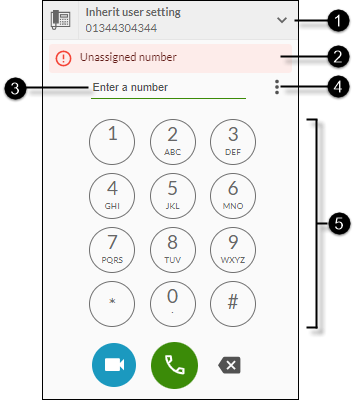
|
|
|
|
|
|
|
|
Presentation Number field |
This is displayed if your user account is configured to allow you to choose a presentation number to present to parties that you call. In some deployments, this may appear in a separate dialog instead of here. |
|
|
|
Call connect failure reason |
This area of the panel displays a connection failure reason if the number you have dialled failed to connect. For example, 'Unassigned Number', and 'User not responding'. The message is displayed for a few seconds only. |
|
|
|
Dial Number field |
Displays the digits and characters that you enter using the buttons on the Dialpad and the keys on your keyboard. You can paste a number or name in this field by clicking the field and then pressing Ctrl + V on your keyboard. |
|
|
|
Options button |
Allows Web iPath users quick access to Web iPath settings. Allows PSTN-paired users to unpair their phones from the DTA. |
|
|
|
Dialpad |
Click the buttons to enter the number you want to dial. |
|
|
|
Video Call button |
Reserved for future enhancement. |
|
|
|
Audio Call button |
Dials the number displayed in the Dial Number field to place a voice call.
|
|
|
|
Remove Display Entries button |
Removes digits from the end of the number displayed in the Dial Number field.
|
See also, Make an Outgoing Call.
During Call Ringing
When your phone rings, the caller's name, originating number, or 'Withheld' is displayed on the panel. If the call has arrived through a queue, then the queue name may also be shown.
Note: the name is displayed if the call is from a storm user or from an external number that is mapped to a name in a directory of contacts (personal or external).
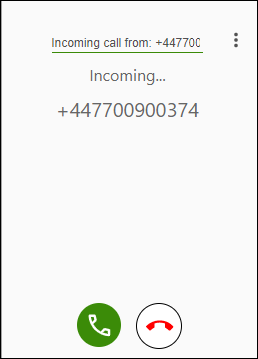
|
|
|
|
|
|
|
|
Answer Call button |
Use this to answer the incoming call.
|
|
|
|
Reject Call button |
Use this to reject the incoming call.
|
See also, Take an Incoming Call.
During a Call
Web iPath and Deskphone
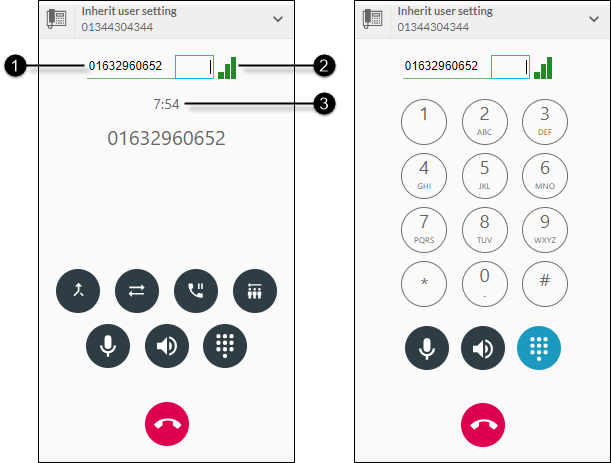
PSTN-Paired Phone
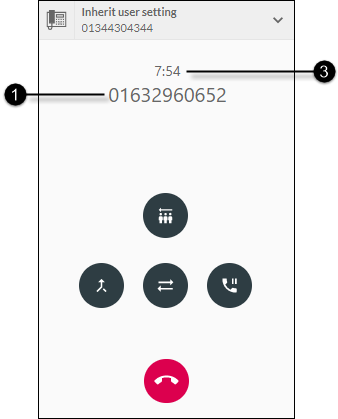
|
|
|
|
|
||||||
|
|
|
Number Display field |
The originating or destination number for the call that is in progress. The blue-bordered field displays any DTMF digits that you enter during a call (for example, in response to IVR menu options). This does not apply to calls on a PSTN-paired device as all DTMF digits are displayed on the PSTN device. |
||||||
|
|
|
Call Quality Indicator |
Web iPath users only Indicates the quality of the connection between your PC and the storm platform that may affect sound quality.
Note: if you are experiencing signal loss, check your network cable if you are on a wired connection; if you are on a wireless connection, ensure that your PC is within range of the wireless router. |
||||||
|
|
|
Call Timer |
The ongoing duration of the call. |
||||||
|
|
|
Mute Call button |
Web iPath users only Mutes your microphone so that connected parties cannot hear your voice. PSTN-paired or deskphone users should use the mute button on their devices. |
||||||
|
|
|
Web iPath users only Displays a volume control allowing you to adjust the volume of the connected parties. To adjust the volume, either click anywhere on the slider, or click and drag the circle along the slider.
For incremental control, either click the plus PSTN-paired or deskphone users should use the volume control buttons on their connected devices. |
|||||||
|
|
|
Dialpad button |
Toggles the display of the Dialpad (this is hidden by default during a Web iPath call). The button is coloured blue when the Dialpad is displayed. |
||||||
|
|
|
Put Back in Queue button |
Returns the caller to the queue they came in from. This function is not available during a PADLOCK interaction. |
||||||
|
|
|
Conference button |
Allows you to add a third-party to a two-way call without speaking to them first (immediate conference). This function is not available during a PADLOCK interaction. |
||||||
|
|
|
Transfer Call button |
Displays transfer options allowing you to cold transer, camp-on transfer, or warm transfer a call to another party, or to add a third party to the call to create a three-way conference. This function is not available during a PADLOCK interaction. |
||||||
|
|
|
Hold Call button |
Places the other party on hold. This function is not available during a PADLOCK interaction. |
||||||
|
|
|
End Call button |
Ends the call. |
Call Information Panel
Some incoming calls may display information relating to the call (during ringing and whilst on the call) such as the customer's details based on information gathered from a database.
This information appears in an information panel, which may be embedded in the Comms panel (as shown below) or displayed as a separate panel alongside the parent panel.
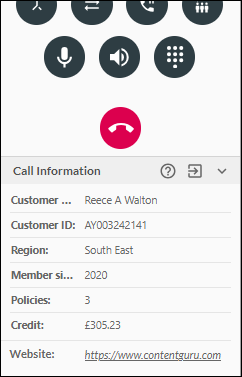
Some services may require you to enter data in editable fields shown on the panel.


 Comms button on the
Comms button on the 












 or
or  minus buttons, or press the keyboard arrow keys when the circle is in focus (it is in focus when bordered by a light blue line as pictured above).
minus buttons, or press the keyboard arrow keys when the circle is in focus (it is in focus when bordered by a light blue line as pictured above).




